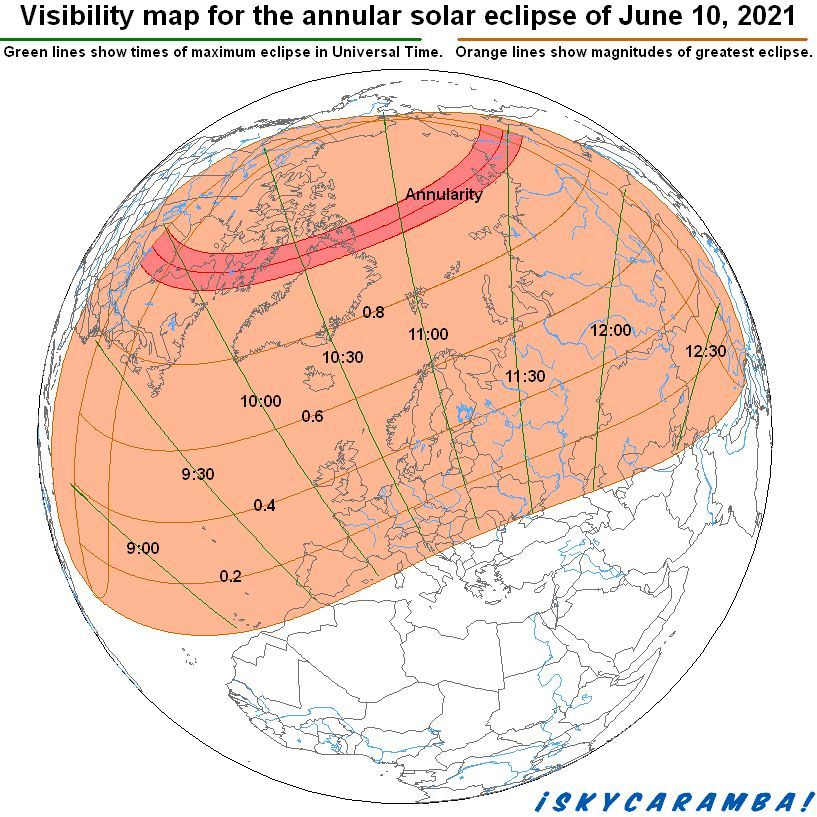As June begins, Mercury is retreating into the sunset. If you can find it, it’ll probably be only on the first few evenings of the month. Venus is above it, approaching the feet of Gemini. The constellation itself isn’t particularly easy to see. The bright stars Castor and Pollux stand out, but the rest don’t get much time to shine as Gemini sets in the twilight. While Mercury disappears evening to evening, Venus moves into the heart of Gemini as Mars leaves the constellation.

The moon passes near Venus on the 11th and 12th. The planet is a little left of Mebsuta by this time while Mars is clearly on its way toward Cancer. The moon passes by the red planet on the 13th. Look for Venus above Wasat on the 17th. Venus is moving a lot faster than Mars. If you have even just a little experience in astronomy, you are right to expect that the two are heading for a close call in a few weeks.

Around the 22nd, Mars is getting close to M44, known by two other names—Praesepe and the Beehive cluster. Take a look in binoculars or a low power telescope for a wondrous view of an open cluster with more than 1,000 stars. If you can see it in a dark sky, you will see the manger (Praesepe is Latin for the word) the ancient Greeks and Romans saw two donkeys eating from. Those donkeys are the nearby stars called Asellus Borealis and Asellus Australis, respectively the northern and southern donkeys.

By the 26th or 27th, Mars has left M44 behind But Venus’ approach makes it clear it will visit the cluster in July. The rendezvous comes July 3. Just nine and ten evenings later comes the close call between Venus and Mars as they head toward Leo.
On the other side of the sky, Libra and Scorpius rise at sunset. Saturn rises at approximately midnight local time. The ringed planet is deep in Capricornus, providing a good opportunity to learn this dimmer constellation if you haven’t already. Jupiter and a nearly last quarter moon rise a little after Saturn on the 1st. Jupiter is in Aquarius. Saturn slowly moves westward (retrograde) all month and is visited by the moon on the 27th. The moon is near Jupiter again two mornings later.

Jupiter is moving eastward (direct motion) when June begins but is still enough that some almanacs would call it stationary by the middle of the month. By the end of June, it’s retrograde.

The Pleiades rise as dawn approaches. You also get a good view of Pisces this month. Cetus becomes more visible as the month goes on. Look for Hyades and try to spot Mercury as a morning object in the second half of June.

The moon passes in front of the sun on June 10th. The annular eclipse is visible in a path that stretches from the Kolyma Range in Russia, across the North Pole, to parts of Canada southwest of the southern part of Hudson Bay. Partial phases are visible from most of Asia and Europe, Greenland, Iceland, and northern parts of Canada and Alaska. Do not look directly at a solar eclipse without eye protection made specifically for seeing a solar eclipse.
The solstice will be at 03:33 UT on the 21st.
Mercury is at aphelion on the 10th at 0.467 astronomical units from the sun. Venus is at perihelion on the 12th at 0.718 AU.
The moon’s circumstances this month: last quarter on the 2nd, new on the 10th, first quarter on the 18th, full on the 24th. The moon is on the equator going north of the 4th. Northern lunistice is on the 12th at 25.6°. The moon goes south again on the 19th. Southern lunistice is on the 25th at 25.6°. Apogee is on the 8th at 406,200 km. Perigee is on the 23rd at 359,900 km.
You may find Vesta near the moon on the 17th. It’s around 7th magnitude and is easily visible in a dark sky with a small telescope. A lot of people will find it near the limit of what they can see with a near first quarter moon so close though. Look in the area a few nights before and for more than one night. You’ll be able to see a faint dot that is in a slightly different place each night.
Some notable conjunctions this month:
1st – Jupiter and the moon 4.3°
3rd – Neptune and the moon 4.1°
7th – Uranus and the moon 2.1°
10th – Mercury at inferior conjunction at 3.1°
12th – Venus and the moon 1.5°
13th – Moon and Pollux 3.1°
13th – Mars and the moon 2.8°
16th – Moon and Regulus 4.7°
17th – Vesta (asteroid 4) and the moon 2.2°
23rd – Moon and Antares 4.6°
24th – Flora (asteroid 8) and Venus 0.4°
27th – Saturn and the moon 3.9°
28th – Jupiter and the moon 4.2°
30th – Neptune and the moon 4.0°
What’s called a daytime meteor shower peaks this month. You may see a few Arietids before sunrise. But the radiant is up nearly all day, so there’s little to nothing to see at night. Some radar operators may “see” the daytime meteors. And some radio enthusiasts enjoy using meteor trails, day or night, to get distant signals. Meteor trails are ionized paths. For a minute or two, distant radio signals may reflect off them just like they reflect off the ionosphere. The shower peaks on the 7th.
